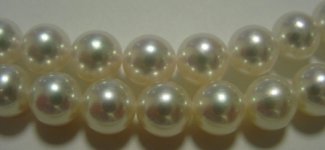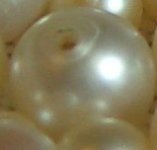Hi Stephen
I try to be even-handed in these debates, but I do like to answer when you make it into a taking sides kind of argument. The only person in this thread that said "a couple of years" was KAC, yet it was this statement you used in your argument to override my argument. I often think that some of you akoya pearl merchants do not READ my posts carefully, y'all just see me saying "akoyas wear out, if worn regularly" and become upset that customers might see that.
I'll concede the eBay pearls, but I think they were also Mikis.
Without quoting any more of #8 above, but to amplify it: My in-laws mentioned in #8 above, wore
at least one of their strands daily. Nevertheless, after decades, the ones that came down to the grandchildren had many pearls that needed to be replaced because of nacre wear off. The replacement pearls we found did not have nacre as thick as the early cultured akoyas the in-laws wore. In fact I found out on this very forum that the akoya nacre standards have been
reduced in thickness over the years. A nacre thickness of .7 , which you sell, is among the best available, and quite above the current standard. But how thick is that, about a sheet of paper's thickness?
On the other hand,
my grandmother's pearls, naturals from Bahrain, show no signs of wear(unless you magnify them tremendously). Some of them are believed to be up to 200 years old. Even if they are smaller because of nacre wear off, they don't show a bead underneath, only more nacre. I do have a picture with nacre wear on one of them.
I hope my comments will not affect most akoya devotees,

but I do like to be allowed to say that the best CFWP are as beautiful as the hanadamas- and last much longer. Jeremy even said in a thread here, that even a hanadama strand will lose its hanadama quality in 10 years, if worn very much. (I thought that was quite a concession)
Never will there be a time when the Frashadamas are as reasonable as they are now, and I love it when folks see that for long lasting pearls of high quality at a reasonable price, they can't be beat. And the only place I argue this, is to the people who read this forum- the rest of the world does not know, yet.




